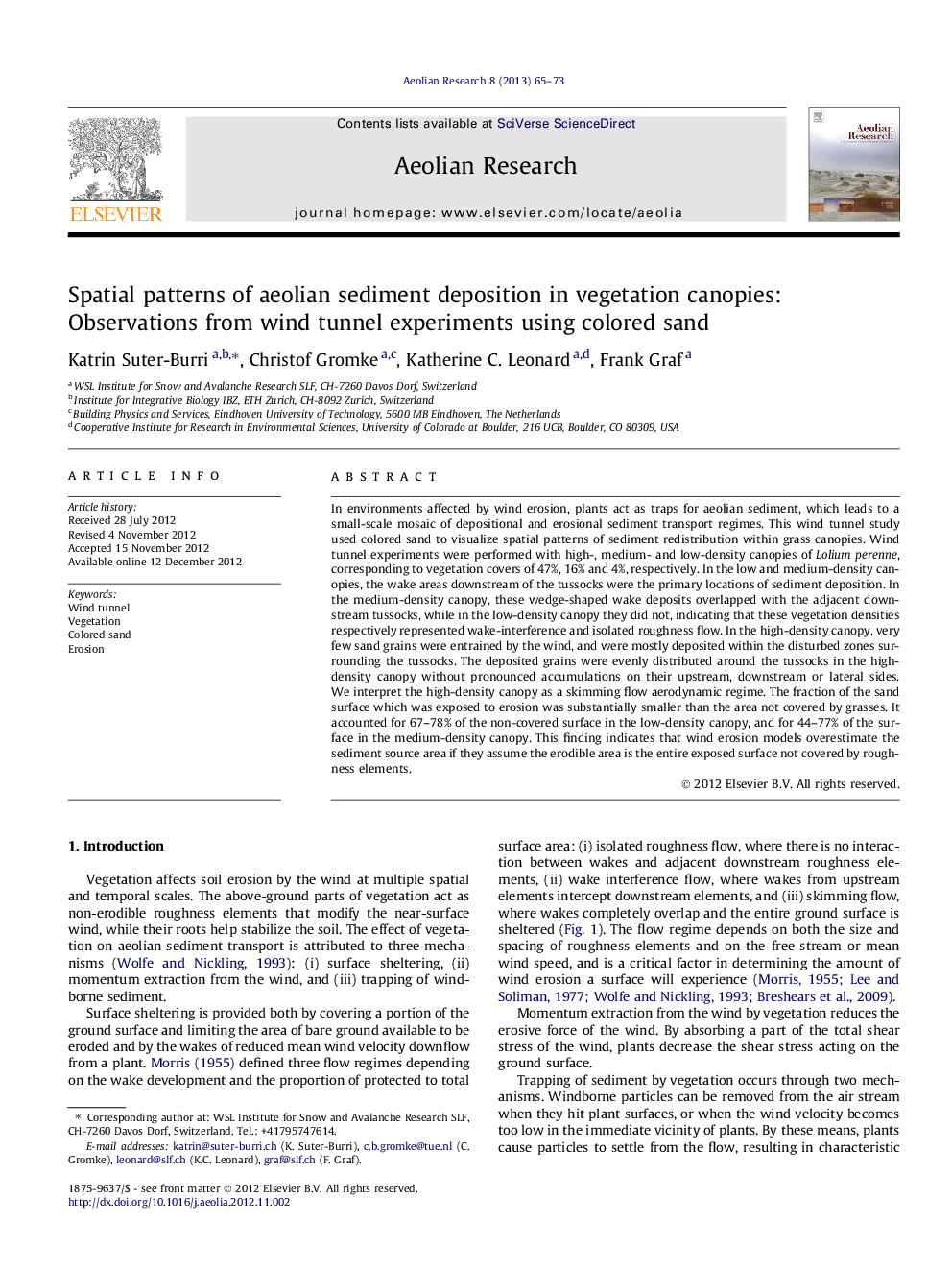| کد مقاله | کد نشریه | سال انتشار | مقاله انگلیسی | نسخه تمام متن |
|---|---|---|---|---|
| 4673872 | 1634119 | 2013 | 9 صفحه PDF | دانلود رایگان |
In environments affected by wind erosion, plants act as traps for aeolian sediment, which leads to a small-scale mosaic of depositional and erosional sediment transport regimes. This wind tunnel study used colored sand to visualize spatial patterns of sediment redistribution within grass canopies. Wind tunnel experiments were performed with high-, medium- and low-density canopies of Lolium perenne, corresponding to vegetation covers of 47%, 16% and 4%, respectively. In the low and medium-density canopies, the wake areas downstream of the tussocks were the primary locations of sediment deposition. In the medium-density canopy, these wedge-shaped wake deposits overlapped with the adjacent downstream tussocks, while in the low-density canopy they did not, indicating that these vegetation densities respectively represented wake-interference and isolated roughness flow. In the high-density canopy, very few sand grains were entrained by the wind, and were mostly deposited within the disturbed zones surrounding the tussocks. The deposited grains were evenly distributed around the tussocks in the high-density canopy without pronounced accumulations on their upstream, downstream or lateral sides. We interpret the high-density canopy as a skimming flow aerodynamic regime. The fraction of the sand surface which was exposed to erosion was substantially smaller than the area not covered by grasses. It accounted for 67–78% of the non-covered surface in the low-density canopy, and for 44–77% of the surface in the medium-density canopy. This finding indicates that wind erosion models overestimate the sediment source area if they assume the erodible area is the entire exposed surface not covered by roughness elements.
► Wind tunnel experiments were conducted with live grass tussocks and colored sand.
► Spatial patterns of erosion were visualized in three different vegetation densities.
► The patterns of redistributed sand indicated three distinct aerodynamic flow regimes.
Journal: Aeolian Research - Volume 8, March 2013, Pages 65–73
